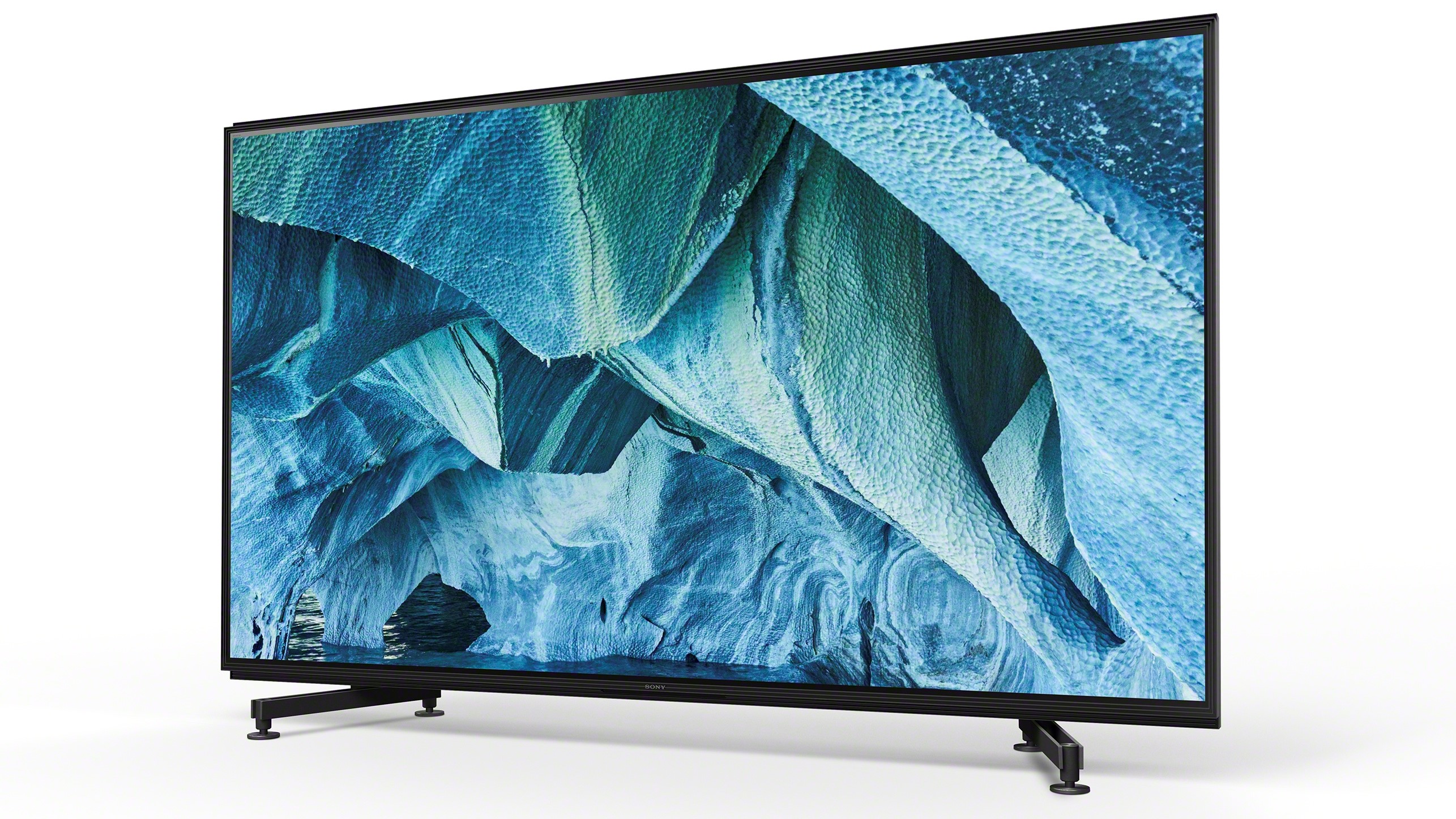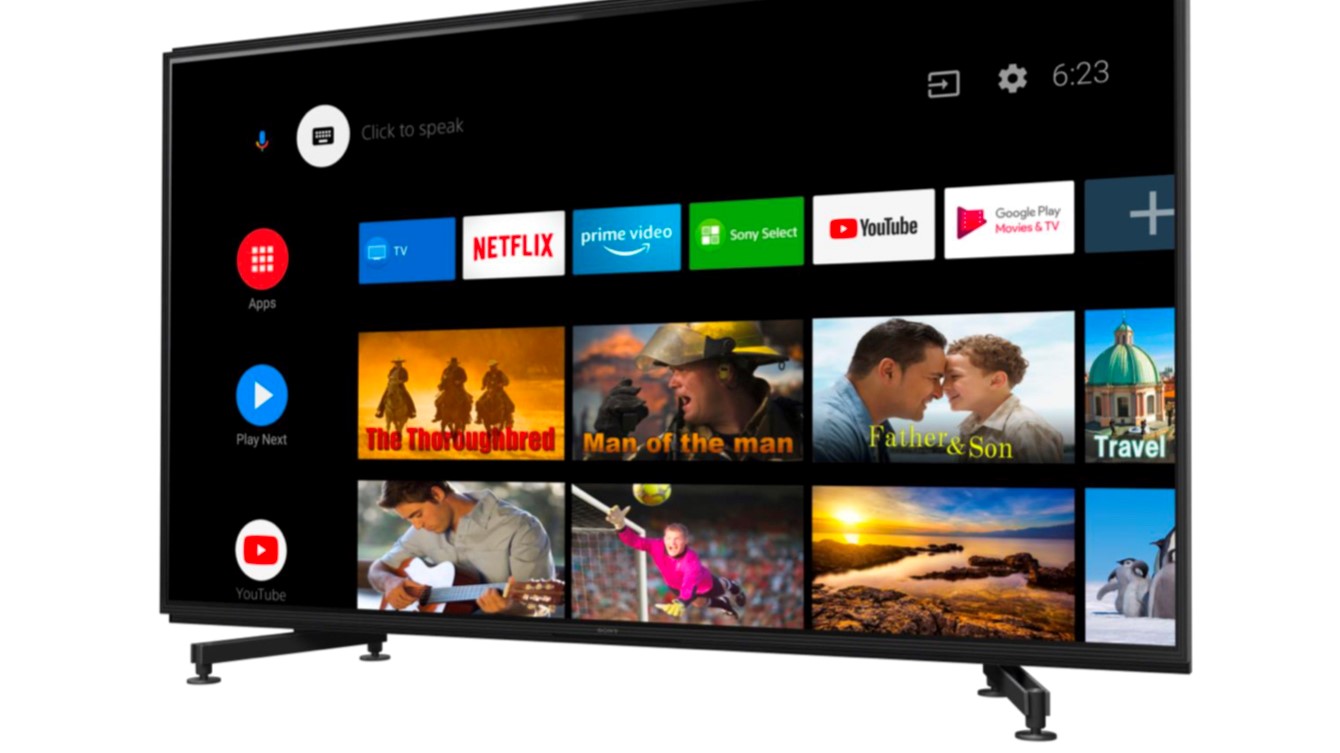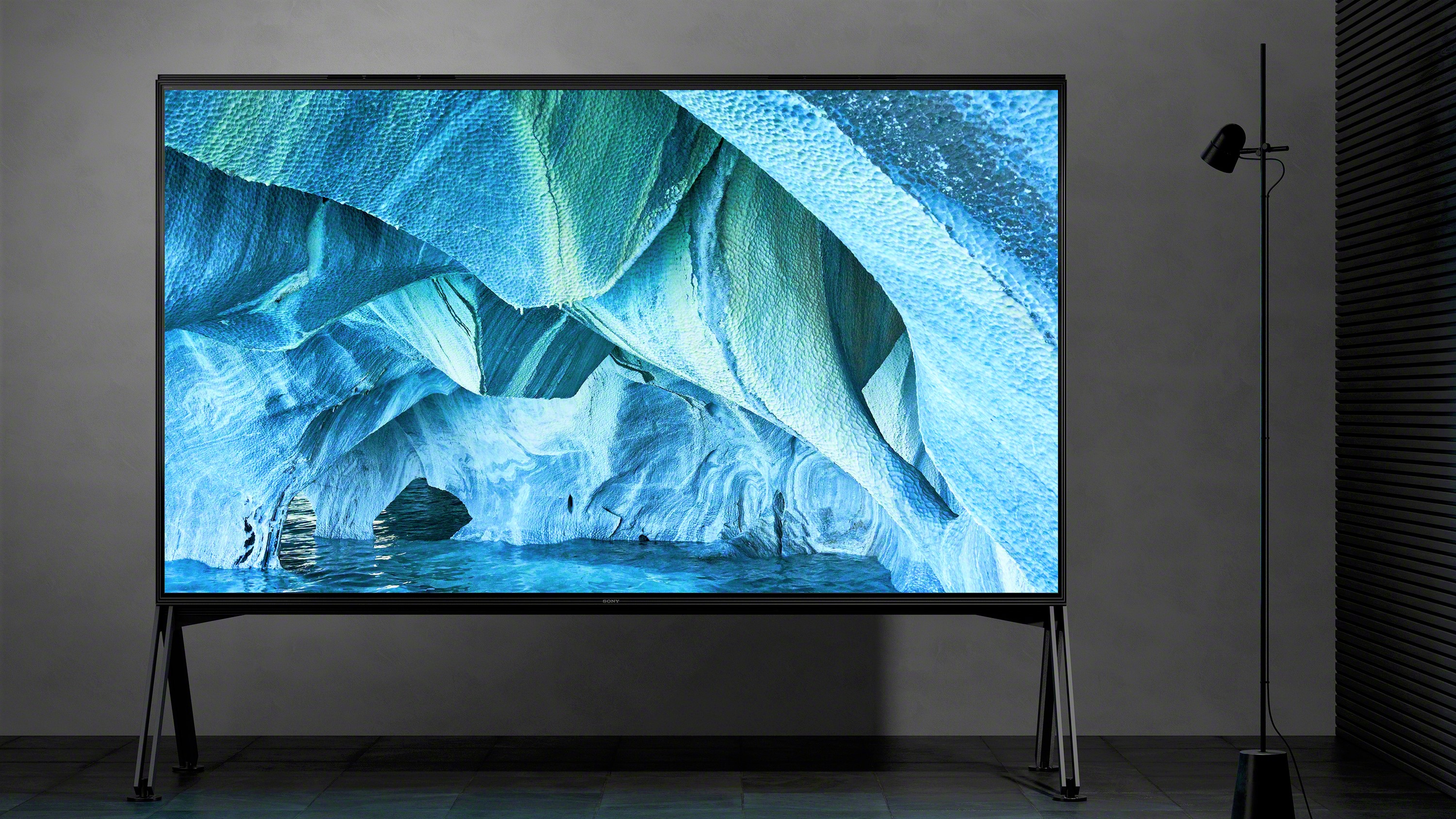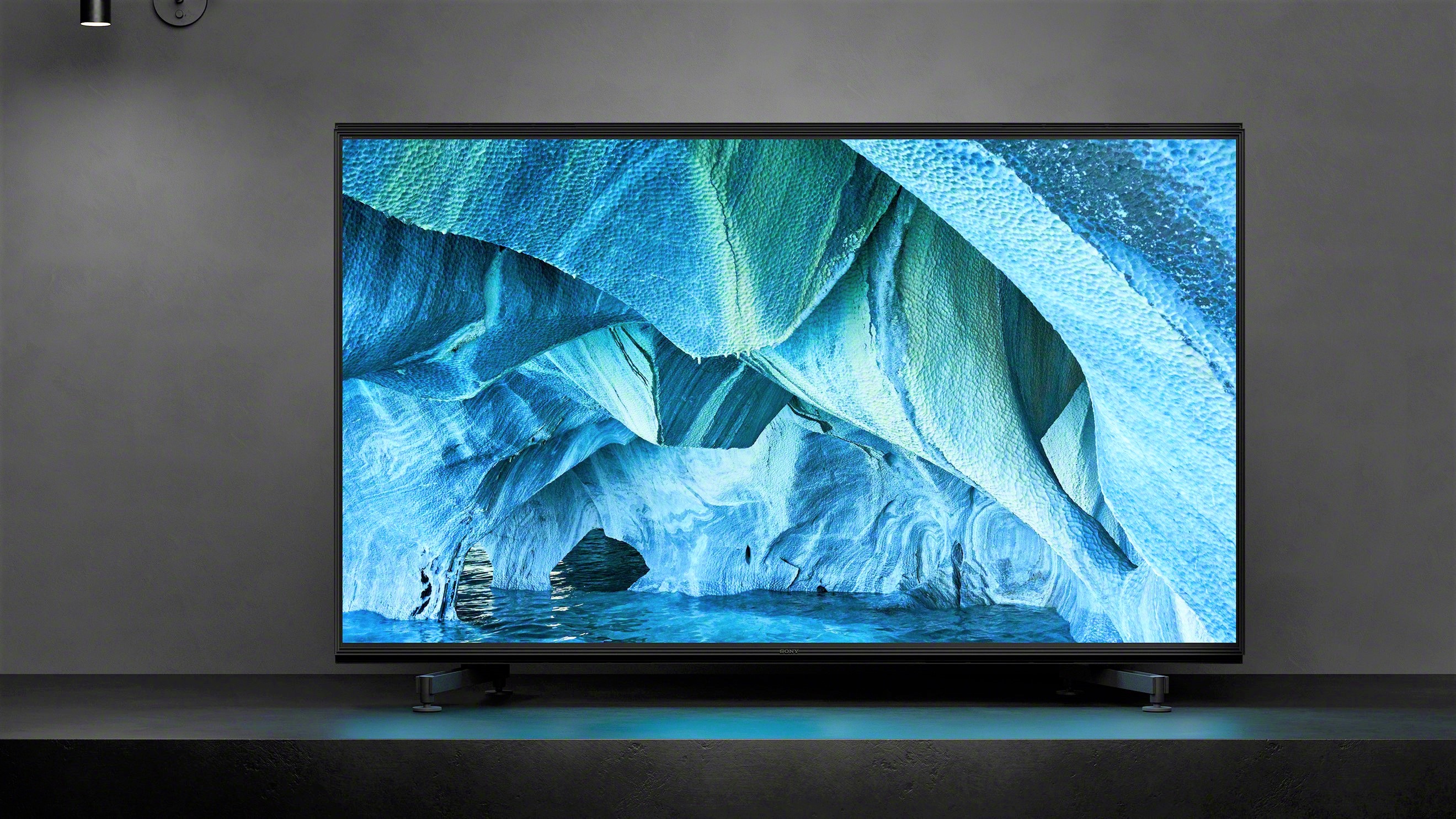TechRadar Verdict
Sony has pulled no punches with its debut 8K TV series. As well as providing more pixels than any Sony TV before, they also deliver new levels of brightness and processing power. The result is the definition of TV opulence: A dazzling and brave statement of intent from a brand that clearly wants to plant its flag firmly in the new 8K high ground.
Pros
- +
Stunning 8K picture quality
- +
Excellent 4K upscaling
- +
Groundbreaking HDR brightness
- +
Impressive viewing angles
Cons
- -
Some backlight blooming
- -
High end prices
- -
No full HDMI2.1 ports
- -
No HDR10+ support
Why you can trust TechRadar
Everything about Sony’s debut 8K TVs is massive: their screens measure in at 85 and 98 inches respectively. Their price tags stretch into the tens of thousands. Their screens carry more than 33 million pixels. Their specifications include a measured ground-breaking brightness of almost 4000 nits, while the latest Sony Backlight Master Drive appears delivers a huge 700-plus local dimming zones for its direct (rear mounted) LED lighting system.
In short, Sony’s Z9G (ZG9 in the UK) are about as flagship as flagship TVs get, offering an uncompromising glimpse into the high-tech future of home entertainment.
If you’ve been waiting for the Z-Series’ return to its former glory and you’ve got the deep pockets to pay for it, the new Z9G could be the smart TV pantheon entry we’ve been waiting for since the Z9D/ZD9 in 2014.
Price and release date
Sony has taken an unashamedly high-end route into the brave new world of 8K TVs. In the UK, its debut ZG9 range comprises (for now, anyway) just two huge 85-inch and 98-inch models, the Sony KD-85ZG9 and Sony KD-98ZG9, that cost an eye-watering £14,000 and £84,999, respectively.
In the US, you'll find the nearly equivalent Sony XBR-85Z9G and Sony XBR-98Z9G that will set you back around $12,999 and $69,999, respectively.
The 85-inch Sony A9G model - also called the KD-85Z9G - is coming to Australia at some point soon, but pricing and release date have yet to be announced.
Design

Screen sizes available: 85-inch, 98-inch | Tuner: Freeview HD | 4K: Yes - actually 8K | HDR: Yes (HDR10, Dolby Vision, HLG) | Panel technology: Backlight Master Drive LED | Smart TV: Yes, Android Oreo | Curved: No | Dimensions: 1913(w) x 1141(h) x 120(d) mm | 3D: No | Inputs: Four HDMIs (one 2.1, three 2.0), three USBs (one 3.0), RF tuner, Wi-Fi, Ethernet, Bluetooth
The defining thing about the Z9G/ZG9 Series' design, of course, is their sheer enormity. These screens are huge, and the frames around and behind those screens are unusually chunky too. But this is pretty understandable on this occasion, though.
Sign up for breaking news, reviews, opinion, top tech deals, and more.
We can accept the extra heft because these sets use direct lighting - all that screen acreage has to be supported by something, surely - and the large screen frame plays host to an innovative forward facing speaker system. This sees two speakers placed along the TV’s top edge and two along the bottom edge join forces with two subwoofers in the 85-inch model, and one larger one in the 98-inch set.
The 85-inch ZG9 rests on a pair of slightly functional-looking desktop feet, while the 98-inch set can be placed either on a similar pair of desktop feet, or more attractive easel-style, floor-standing legs.
The black bodywork of both sets is exceptionally robust, and as with all recent Sony TVs, the sharply sculpted rear panel provides all the channelling and input covers you need to make cabling more or less invisible.
It's not all form and function, however. Connectivity is also good.
On the exterior, you'll find four HDMIs, one of which deploys the very latest 2.1 standard, giving it compatibility with 8K video at 60 frames a second. It might have been nice if the other three HDMIs were 2.1-certified too, given that LG is offering that even on its 4K OLED TVs this year. But there are currently no HDMI 2.1-certified sources, so for now it’s a moot point.
There are three USBs for multimedia playback, too, one of which supports 3.0 speeds. Ethernet and Wi-Fi network options are inevitably there too, along with optical digital and 3.5mm audio outputs.
Design TL;DR: Sony’s ZG9/Z9G TVs are more big than beautiful, but they put their size to good practical use by including built-in forward facing speakers and an uncompromising LED lighting engine.

Smart TV (Android Oreo)
Sony has again turned to Google’s Android TV platform for the 8K Master Series' smart TV features. This time round we get the Oreo version, though, and it seems that the platform will update to Android Pie when that comes out.
Android TV is still not, in truth, our favourite smart TV system. Despite now being in its eighth iteration, we still find its ‘shelf’-based design and the way the home page takes over the whole screen rather cumbersome. We still tend to feel, too, as if the Android menus are more interested in pushing content at me that app makers want me to watch, rather than emphasising stuff that it’s learned itself that we really might want to watch.
That said, Oreo runs pretty slickly and relatively bug-free on the ZG9/Z9G, and the onscreen layout is certainly improved over previous Android iterations. Particularly when it comes to the prioritisation of video sources over other, less TV-centric types of apps and content.
Android TV still has a few blank spots when it comes to video app support, at least in the UK. Sony works round the biggest issues in this area, though, by separate adding the YouView app, which provides a simple, electronic programme guide approach to finding content across all the key UK terrestrial TV apps..
The YouTube, Netflix and Amazon Video apps are all present and correct within the Android Oreo interface, and they all support both 4K and HDR playback. As with Samsung’s 8K TVs, though, frustratingly the ZG9s can’t play YouTube’s small selection of 8K videos.
As you’d expect these days, the ZG9s carry voice recognition. This comes in the form of built-in Google Assistant and, if you have an external Amazon listening device, Alexa. There’s even a microphone built into the TV, so that you can talk to Google Assistant without needing to find the remote control.
That remote control, we're happy to say, is an all-new design from Sony that’s far easier to use and much more responsive than the horror show the Japanese brand has persevered with for so many previous TV generations.
Smart TV TL;DR: Android TV still feels like the most cumbersome of the current TV smart platforms. But at least the latest version seems to be heading in the right direction.

HD/SDR Performance
Given all the work that needs to go into it, It’s far from easy for 8K TVs to show HD content - after all, they’re having to add tens of millions of pixels to HD pictures in real time. Sony’s 4K TVs have a great reputation for their upscaling prowess, though, and we're happy to say this has translated through to its debut 8K TVs.
Not surprisingly given the ‘kitchen sink’ level of specification Sony has brought to the ZG9s, they get the brand’s latest and greatest X1 Ultimate processor. This supports Sony’s new 8K X-Reality Pro upscaling system, complete with a vast database of picture knowledge and analysis that now includes 8K examples. This database approach allows the TV to more quickly recognise and best deal with different types and standards of source when going about the business of remapping them to the screen’s colossal resolution. And the results are excellent.
Sensibly, Sony’s 8K upscaling system doesn’t focus too much on sharpness and detail when rendering HD sources. Instead the emphasis is on detecting and removing source noise, as well as making the image look denser and more three dimensional. This approach might not shout ‘8K’ at you as much as Samsung’s 8K upscaling often does, but it does leave you with a surprisingly relaxing, natural and consistent picture. This is really a pretty staggering achievement when you consider you’re watching an HD source that’s had more than 30 million pixels added to it for playback on an 85- (or 98-) inch screen.
Just as impressive is Sony’s handling of SDR content. You have two options for this: you can either watch it in ‘standard’ SDR (using the Custom picture mode), or upconverted to HDR (with any other picture preset) courtesy of the X1 Ultimate system’s object-based HDR Remastering system.
The set’s gorgeous combination of rich contrast and exceptionally deft and natural colour reproduction makes either approach look terrific. For me this TV is all about HDR. And when that HDR remaster is done as sensitively as it is here, I don’t really see much reason not to use it unless the obsessive AV purist in you just can’t do it.
It’s worth noting while admiring Sony’s HDR remastering work that Samsung has actually removed its HDR+ HDR upscaling option from its latest TVs.
4K/HDR Performance
The 85ZG9 has been designed from back to front and top to bottom to bring HDR home. And it does so in truly spectacular style.
The first thing that hits you is the screen’s incredible brightness: In its Cinema and Custom modes it can pump out more than 3,600 nits (the 98-inch screen gets nearer 3,900!) on a 10% white HDR window, which immediately lifts HDR images to a dazzling level of realism and dynamism.
Images mastered to 4000 nits and higher, in particular, such as the Dolby Vision 4K Blu-rays of It and 2001: A Space Odyssey, look nothing short of explosive. The sun-lit space ships in 2001, for instance, enjoy the punchiest HDR impact we’ve seen on any display outside of Dolby’s Pulsar mastering monitor. There’s also, though, real refinement even within these extreme image highlights, revealing glinting metal and subtle, depth-creating shading where lesser screens would just ‘flare out’. Unless they’d adopted a much darker baseline brightness level.
With It, there are again some phenomenal HDR peaks on show. But here the real HDR highlight is the extraordinary intensity of the exterior sun-drenched shots around Derry. You feel like you’re looking at real daylight action - which is pretty unsettling given what else is going on in town during the film’s running time. The remarkable brightness also enhances the contrast between the film’s pretty much universally terrifying dark sewer/basement scenes, as well as making the moments when Pennywise puts in an occasional daylight appearance all the more chilling.
The better news is that the 85ZG9 has the colour intensity and range to keep pace with its awesome brightness. In other words, the brightness feeds into a spectacular colour volume that unlocks the wide gamut technology that’s such a key partner to the HDR experience. There’s no sense of the wan or washed out tones you get when screens push for brightness without having the colour credentials to keep up.

At this point it’s time to get into the ZG9’s biggest talking point: Its 8K resolution. This combines with HDR to deliver to an experience the like of which we haven’t seen before during any TV review... the only problem is that all of the native 8K content available for our viewing pleasure came from a show real that combines a mixture of landscapes, rural scenes, an 8K HDR render of Gran Turismo, and some footage of the Rio Carnival. All of the 8K showreel footage looked stunning in its richness, dynamism and, for want of a better word, realness, but it really only serves as showcase content and not the kind of thing you'd watch on a Friday night.
So where should one sit to best enjoy 8K content? The absolute fullest impact from the 85-inch images came from a viewing distance of around 1.5x the screen’s height - the image still felt more three-dimensional and immediate than 4K content does from entirely ‘normal’ viewing distances.
Though, you shouldn't feel like you have to sit directly in front of the screen, either. The image retained most of its quality if watched from the side, too, as the ZG9 retains the X-Wide Angle technology introduced - with not entirely happy results - on Sony’s ZF9 4K sets last year. Mercifully, Sony has this time managed to deliver its wide angle feature without dealing the sort of heavy blow to the screen’s general contrast that we witnessed with the ZF9. On the contrary, the 85ZG9 is capable of delivering impressively inky black tones of just the sort you’d hope to see on a TV with a Sony Backlight Master Drive LED backlighting system.

So where's the problem? The 85ZG9’s backlight isn't completely flawless. At times, usually during complex HDR shots that contain a wide mix of light and dark tones, the image can start to exhibit a little general greyness over dark areas, and some gentle blooming around the brightest image elements. Small, really extreme brightness peaks occasionally and weirdly take on a quite dark, bluish tone, as if the screen suddenly can’t cope with its own brightness.
Overall, black levels aren’t generally quite as deep as those you get with Samsung’s 8K TVs, either - though this can help the Sony set retain a bit more shadow detail in very extreme images.
On the flip side of this, the images the upscaling creates are somewhat different in tone to those you get from Samsung’s 8K TVs. The Sony’s images are not quite as heavily detailed or sharp, but they compensate for this by looking cleaner and more even. Something which arguably makes them more immersive to spend extended time with than Samsung showier efforts.
It’s seriously impressive, too, to find that Sony’s upscaling engine manages to maintain its integrity even when also having to cope with a lot of motion in the frame. In fact, Sony’s long-admired motion processing comes into its own more than ever before in an 85-inch 8K environment, where any failings would stick out like a sore thumb.
4K/HDR Performance TL;DR: Thanks to its peerless brightness, immense resolution, huge but subtle colour range and surprisingly excellent contrast performance, the 85ZG9 delivers a truly state-of-the-art exhibition of what today’s cutting edge picture technologies can do.

Sound
Unfortunately, the Dolby Atmos sound Sony is promising for the ZG9/Z9G isn’t ready yet; it’s going to be added via firmware update later in the year. From listening to the ZG9’s unusual sound system with non-object based sound formats, however there's good reason to suspect Dolby Atmos will serve it well when support for the format does eventually arrive.
The placement of two speakers above the screen as well as two more below it really helps to deliver a large sound stage, as well as giving sound effects a sense of verticality and placement accuracy you don’t normally hear with built-in TV speakers - and which should prove a great fit for Atmos height channels.
Since the speakers face forwards, moreover, they enjoy a level of detail and presence that few rival TV speakers can muster. Plus they have enough power to shift up a few gears when movie action scenes kick in, and don’t flounder when pushed hard.
For all these strengths, though, the 85ZG9’s sound still felt like a mild disappointment. Voices tend to become rather lost in the mix when the going gets tough, and despite the speakers firing forward and being supported by a passably grunty subwoofer, the soundstage can feel rather restrained and polite at times.
Sound TL;DR: The scale and detail of the sound is impressive. But voices can become overwhelmed, and there’s not quite as much raw power and energy in the soundstage as we’d hoped given its forward-facing speaker configuration.

Other panels to ponder...
The only other 8K TVs in town right now is the Samsung Q950R models. Those TVs, too, do a brilliant job of selling the 8K dream, backing up their resolution with an outstanding contrast performance, bold colours and a startlingly sharp upscaling system.
The Samsung sets have the edge over the Sony on black level depth, and deliver sharper looking upscaled 4K pictures. The 82-inch 82Q950R is a substantial amount (£4,000) cheaper than the Sony 85Q950R, too.
The Sony 85ZG9, though, dims less around extreme stand-out bright objects than the Samsung models do. It also retains more detail in dark areas, its upscaled pictures look more even and consistent, and I felt it got even more impact than the Samsung TVs from native 8K content.
Final verdict
The 85ZG9 is, for the most part, a triumphant 8K debut by Sony: Far from just relying on its huge pixel count to earn its flagship TV wings, it backs its resolution up with huge brightness, colour and contrast, unlocking the joys of HDR more than any other set to date.
Even Sony’s Backlight Master Drive technology can’t prevent a little backlight blooming on such a huge and immensely bright TV, but for the vast majority of the time the 85ZG9 is a poster boy (albeit an expensive one) for 8K’s hyper-realistic charms.
- Looking for more info on Sony 2019 TVs? We've got it!

John has been writing about home entertainment technology for more than two decades - an especially impressive feat considering he still claims to only be 35 years old (yeah, right). In that time he’s reviewed hundreds if not thousands of TVs, projectors and speakers, and spent frankly far too long sitting by himself in a dark room.
